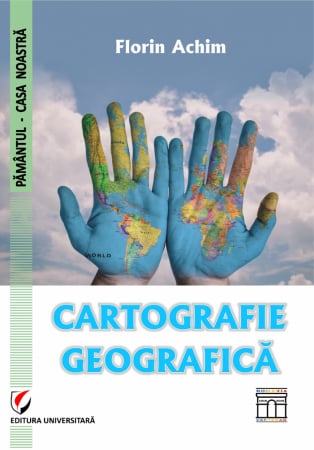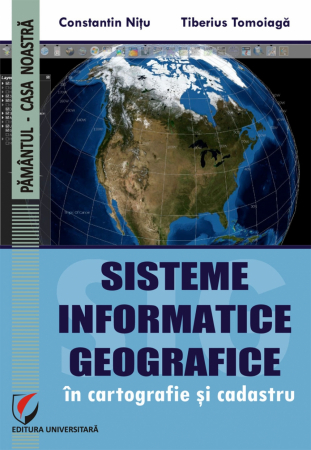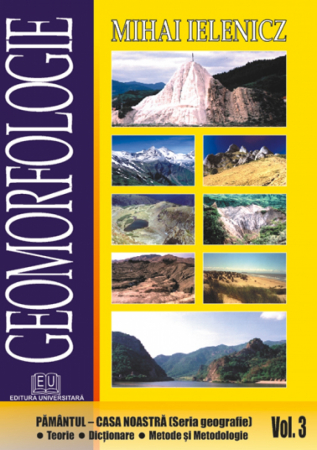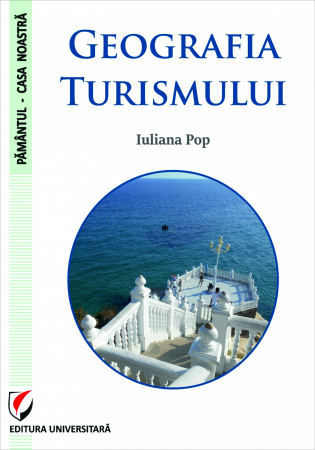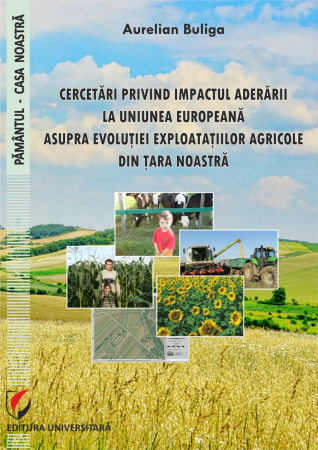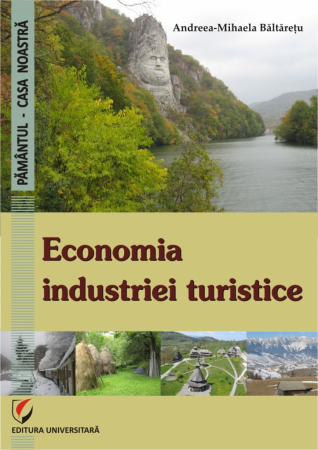Manuscript proposals: info@editurauniversitara.ro / 0745 204 115 //// Tracking orders Individuals / Sales:0745 200 718 / 0745 200 357 Orders Legal entities: 0721 722 783
Publisher: Editura Universitara
Author: Emil Vespremeanu
ISBN: 978-973-749-017-7
Publisher year: 2005
Edition: I
Pages: 256
Product Code:
9789737490177
Do you need help?
0745 200 718
/
0745 200 357
- Description
- Download (1)
- Authors
- Content
- More details
- Where to find it
- Reviews (0)
Considered unanimously as one of the most interesting seas in the Planetary Ocean, the Black Sea has been intensively researched, especially in the last 50 years, by specialists from riparian countries, as well as by numerous teams that included oceanographers from the United States, Italy, France, Germany, who worked in international programs in collaboration with researchers from some circumeuxine countries.
Due to these efforts, the Black Sea is becoming better known both from a strictly oceanographic point of view, as well as geological, geophysical, geomorphological, climatic, biogeographical, etc. Unfortunately, the results of this research, published in thematic monographs and articles in the most important periodicals in the field in the world, are little known in Romania.
We present, below, a synthesis of current knowledge about the Black Sea that we consider necessary for students of geography faculties preparing for specialized exams, graduates studying for the bachelor's exam, teachers who are informed for tenure exams in education or for obtaining didactic degrees, as well as to any reader interested in the extraordinary nature of this sea.
Fruit of a documentary, research and didactic activity extended for more than 35 years, this paper wants to make order in a very large volume of information accumulated in the last 150 years, presenting, objectively and critically, the current state of knowledge of the Sea. Black, so that the reader retains the essentials. The very rich information was filtered through long personal experience obtained through research on the coastal environment in the northwest of the Black Sea, so that some chapters have a unique character.
Our approach is geographical, the work wanting to be a monograph of marine geography.
But what is marine geography?
Beginning in the mid-nineteenth century with the work of M.F. Maury, Physical Geography of the Sea (1855), later published in several increasingly large editions, marine geography set as its main objective the description, mapping and regional analysis of the seas and oceans on Earth. Marine Lieutenant M.F.'s book Maury relied not only on the study of the American Admiralty's archives and the author's navigator experience, but also on deep knowledge of geography, Alexandre von Humboldt's influences being obvious.
The results of the Challenger expedition (1872–1876) and the first treatises
scientific studies of oceanography (M. Thoulet, 1890; O. Krummel, 1907) represents the turning point in which oceanography detaches itself from marine geography, moving to deepening by fields (physical, chemical, geological, biological), which reach more and more further in the knowledge of the components of the Planetary Ocean.
Strictly descriptive at first, marine geography, long called the "geography of the seas and oceans," has gradually evolved in two directions: (i) marine cartography and (ii) regional analysis of the Planetary Ocean. Recently, a third direction called coastal geography or coastal geography has been added.
The elaboration of marine maps of different types, as well as marine atlases has its roots since antiquity and has developed impetuously since the second half of the nineteenth century. This direction is maintained even today, reaching a special quality of cartographic information.
The regional analysis of the Planetary Ocean appeared later, when it became necessary to apply the principles, laws and discoveries of oceanography to the entire region with different dimensions, from the entire Planetary Ocean to its small subunits.
Coastal geography (Kustengeographie) has recently emerged from the need for an interdisciplinary approach to integrated coastal zone management. This direction has been recognized in several universities, the one in Kiel being a happy example (Prof. Dr. Horst Sterr, Homepage der AG Kustengeographie, Univ. Kiel, 2003).
Like the regional geography of the land, marine geography makes the effort to integrate all the knowledge about a certain sea or a certain ocean and to present its specificity. The field of knowledge used in the analysis of marine geography is vast, from strictly oceanographic knowledge to meteorology, climatology, biogeography, geomorphology, cartography, anthropology, sociology, geopolitics, navigation, medicine, settlement geography, cultural geography. Numerous issues regarding
exploitation of marine resources, protection of the oceanic and coastal environment, international law of the sea, geopolitical implications of spheres of influence and marine borders, diffusion of cultures and civilizations at sea, complex study of islands (nisology), etc. there are just as many problems facing marine geography today.
It has long been unanimously recognized that geography has “as a millennial task the description and explanation of the whole terrestrial space, requiring itself to subject to a critical examination the information material gathered by it and other geosciences, to analyze the structure and functions of the geosystem (local, regional, planetary) and to assess the state of balance or imbalance between its components. “(V. Mihailescu, 1977, p. 19).
These ideas, which have been applied, consciously or not, for millennia, to the subaerial continental space extending over about 29% of the planet's surface, must also apply to the marine space extending over almost 71% of the same surface.
At present, marine geography is in continuous progress, being recognized as a branch of geography by the International Geographical Union, within which the "Marine Geography" commission (Coo. 17, currently coordinated by Prof. Dr. David) has been operating. Pinder of Queen Mary University of London).
The creation of marine geography monographs for different subunits of the Planetary Ocean is one of the purposes of the above mentioned commission. An example is the large-scale monograph Geographie de l'Ocean Mondial in 6 volumes, of which 2 volumes are intended for general analysis, and the other 4 have regional concerns: Pacific Ocean (1981), Indian (1982), Atlantic (1984), Oceans Polar (1985).
Such monographs, extremely useful for general information for educational, training, protection, geopolitical and geostrategic orientation, etc., are difficult to prepare, due to the need to establish thresholds for physical, chemical, biological, geological or other deepening. , so as not to stifle the information useful for understanding the whole with redundant ballast.
We encountered such difficulties in the elaboration of this paper. We opted for a scientific description of the components of the marine system that is the Black Sea in a concise form and with as rich an illustration as possible.
The elaboration of the present paper raised numerous problems, the most important being:
• the need to develop a model of approach specific to marine geography monographs;
• overcoming primitive and formal descriptivism by introducing and using the current oceanographic theoretical basis, even if it will require the reader an extra effort;
• establishing a certain threshold of strictly oceanographic deepening, in order not to enter the fountain from which we no longer perceive either the horizon or the depth;
• the correct use of the very abundant information gathered during the documentation, so as to avoid, with all conviction, the current "disease" that haunts some geography books and which is manifested by the lack of citations or the practice of partial, incomplete, vague quotations, lack of use of scruples of information and even illustrative material without indicating the source.
The documentation, carried out over many years, aimed to know the results of research on the Black Sea viewed critically in terms of a long acquaintance with the problems of oceanography that involved other documentation, this time theoretical, for the correct understanding of concepts and notions. Intimacy with the problems of oceanography is based on decades of reading, in the country and abroad and on field research, which has allowed us critical attitudes.
The bibliography includes the main sources underlying the paper, reflecting the current state of knowledge of the Black Sea. Reading the primary sources in the language in which they were written allowed us to avoid the distorted perception of the issues addressed. At the same time, the bibliography that accompanies the book becomes a critical and in-depth tool for interested readers.
The use of the theoretical oceanographic basis requires the current use of the notions of geological, geophysical, geomorphological, physical, chemical, biological, ecological oceanography, less accessible to the reader unfamiliar with the vast field of science about the Planetary Ocean. This approach required the definition of notions in the glossary of terms attached to the paper necessary for the correct understanding of less common notions. By this we try to impose a semantic discipline without which any correct thinking is impossible. The ambiguity of concepts and notions always results in errors doubled by unnecessary and sterile controversies.
We consider this glossary very useful because it is found, in the current Romanian literature, the incorrect use of some terms, as well as the misunderstanding of the real meanings of others. The important advances of oceanography in the last 50 years force us to use the correct criteria in defining notions, to eliminate synonyms and confusing meanings. That is why we recommend readers to use the glossary whenever they have doubts about the content of some notions or concepts.
Due to these efforts, the Black Sea is becoming better known both from a strictly oceanographic point of view, as well as geological, geophysical, geomorphological, climatic, biogeographical, etc. Unfortunately, the results of this research, published in thematic monographs and articles in the most important periodicals in the field in the world, are little known in Romania.
We present, below, a synthesis of current knowledge about the Black Sea that we consider necessary for students of geography faculties preparing for specialized exams, graduates studying for the bachelor's exam, teachers who are informed for tenure exams in education or for obtaining didactic degrees, as well as to any reader interested in the extraordinary nature of this sea.
Fruit of a documentary, research and didactic activity extended for more than 35 years, this paper wants to make order in a very large volume of information accumulated in the last 150 years, presenting, objectively and critically, the current state of knowledge of the Sea. Black, so that the reader retains the essentials. The very rich information was filtered through long personal experience obtained through research on the coastal environment in the northwest of the Black Sea, so that some chapters have a unique character.
Our approach is geographical, the work wanting to be a monograph of marine geography.
But what is marine geography?
Beginning in the mid-nineteenth century with the work of M.F. Maury, Physical Geography of the Sea (1855), later published in several increasingly large editions, marine geography set as its main objective the description, mapping and regional analysis of the seas and oceans on Earth. Marine Lieutenant M.F.'s book Maury relied not only on the study of the American Admiralty's archives and the author's navigator experience, but also on deep knowledge of geography, Alexandre von Humboldt's influences being obvious.
The results of the Challenger expedition (1872–1876) and the first treatises
scientific studies of oceanography (M. Thoulet, 1890; O. Krummel, 1907) represents the turning point in which oceanography detaches itself from marine geography, moving to deepening by fields (physical, chemical, geological, biological), which reach more and more further in the knowledge of the components of the Planetary Ocean.
Strictly descriptive at first, marine geography, long called the "geography of the seas and oceans," has gradually evolved in two directions: (i) marine cartography and (ii) regional analysis of the Planetary Ocean. Recently, a third direction called coastal geography or coastal geography has been added.
The elaboration of marine maps of different types, as well as marine atlases has its roots since antiquity and has developed impetuously since the second half of the nineteenth century. This direction is maintained even today, reaching a special quality of cartographic information.
The regional analysis of the Planetary Ocean appeared later, when it became necessary to apply the principles, laws and discoveries of oceanography to the entire region with different dimensions, from the entire Planetary Ocean to its small subunits.
Coastal geography (Kustengeographie) has recently emerged from the need for an interdisciplinary approach to integrated coastal zone management. This direction has been recognized in several universities, the one in Kiel being a happy example (Prof. Dr. Horst Sterr, Homepage der AG Kustengeographie, Univ. Kiel, 2003).
Like the regional geography of the land, marine geography makes the effort to integrate all the knowledge about a certain sea or a certain ocean and to present its specificity. The field of knowledge used in the analysis of marine geography is vast, from strictly oceanographic knowledge to meteorology, climatology, biogeography, geomorphology, cartography, anthropology, sociology, geopolitics, navigation, medicine, settlement geography, cultural geography. Numerous issues regarding
exploitation of marine resources, protection of the oceanic and coastal environment, international law of the sea, geopolitical implications of spheres of influence and marine borders, diffusion of cultures and civilizations at sea, complex study of islands (nisology), etc. there are just as many problems facing marine geography today.
It has long been unanimously recognized that geography has “as a millennial task the description and explanation of the whole terrestrial space, requiring itself to subject to a critical examination the information material gathered by it and other geosciences, to analyze the structure and functions of the geosystem (local, regional, planetary) and to assess the state of balance or imbalance between its components. “(V. Mihailescu, 1977, p. 19).
These ideas, which have been applied, consciously or not, for millennia, to the subaerial continental space extending over about 29% of the planet's surface, must also apply to the marine space extending over almost 71% of the same surface.
At present, marine geography is in continuous progress, being recognized as a branch of geography by the International Geographical Union, within which the "Marine Geography" commission (Coo. 17, currently coordinated by Prof. Dr. David) has been operating. Pinder of Queen Mary University of London).
The creation of marine geography monographs for different subunits of the Planetary Ocean is one of the purposes of the above mentioned commission. An example is the large-scale monograph Geographie de l'Ocean Mondial in 6 volumes, of which 2 volumes are intended for general analysis, and the other 4 have regional concerns: Pacific Ocean (1981), Indian (1982), Atlantic (1984), Oceans Polar (1985).
Such monographs, extremely useful for general information for educational, training, protection, geopolitical and geostrategic orientation, etc., are difficult to prepare, due to the need to establish thresholds for physical, chemical, biological, geological or other deepening. , so as not to stifle the information useful for understanding the whole with redundant ballast.
We encountered such difficulties in the elaboration of this paper. We opted for a scientific description of the components of the marine system that is the Black Sea in a concise form and with as rich an illustration as possible.
The elaboration of the present paper raised numerous problems, the most important being:
• the need to develop a model of approach specific to marine geography monographs;
• overcoming primitive and formal descriptivism by introducing and using the current oceanographic theoretical basis, even if it will require the reader an extra effort;
• establishing a certain threshold of strictly oceanographic deepening, in order not to enter the fountain from which we no longer perceive either the horizon or the depth;
• the correct use of the very abundant information gathered during the documentation, so as to avoid, with all conviction, the current "disease" that haunts some geography books and which is manifested by the lack of citations or the practice of partial, incomplete, vague quotations, lack of use of scruples of information and even illustrative material without indicating the source.
The documentation, carried out over many years, aimed to know the results of research on the Black Sea viewed critically in terms of a long acquaintance with the problems of oceanography that involved other documentation, this time theoretical, for the correct understanding of concepts and notions. Intimacy with the problems of oceanography is based on decades of reading, in the country and abroad and on field research, which has allowed us critical attitudes.
The bibliography includes the main sources underlying the paper, reflecting the current state of knowledge of the Black Sea. Reading the primary sources in the language in which they were written allowed us to avoid the distorted perception of the issues addressed. At the same time, the bibliography that accompanies the book becomes a critical and in-depth tool for interested readers.
The use of the theoretical oceanographic basis requires the current use of the notions of geological, geophysical, geomorphological, physical, chemical, biological, ecological oceanography, less accessible to the reader unfamiliar with the vast field of science about the Planetary Ocean. This approach required the definition of notions in the glossary of terms attached to the paper necessary for the correct understanding of less common notions. By this we try to impose a semantic discipline without which any correct thinking is impossible. The ambiguity of concepts and notions always results in errors doubled by unnecessary and sterile controversies.
We consider this glossary very useful because it is found, in the current Romanian literature, the incorrect use of some terms, as well as the misunderstanding of the real meanings of others. The important advances of oceanography in the last 50 years force us to use the correct criteria in defining notions, to eliminate synonyms and confusing meanings. That is why we recommend readers to use the glossary whenever they have doubts about the content of some notions or concepts.
-
Geography of the Black Sea
Download
EMIL VESPREMEANU (born 1941), professor of oceanography and environmental protection at the University of Bucharest, Faculty of Geography. Ph.D. in geography in 1971. Currently director of Coastal Research Center for Environmental and Marine Research and the resort of Saint George River (Danube Delta). Coastal oceanography and geomorphology specialist navy. PhD supervisor. Author of nine books and over 100 articles published in the country and abroad. Director of 46 research contracts and grants and contributor to 15 other grants. He conducted research internships, research and participation in scientific events in Bulgaria, Russia, USA, France, Serbia-Montenegro, Spain, Germany, Turkey, Italy, Greece, Holland, Hungary. Chief Editor of the magazine "Coastal Oceanography Research and Education" and "Journal of geomorphology". Geomorphology is the president of Romania Association and vice president of the Society of Geography of Romania.
FOREWORD / 5
INTRODUCTION / 9
1. THE SITTING OF THE BLACK SEA. WHAT KIND OF SEA IS THE BLACK SEA? CONSEQUENCES OF THE SETTLEMENT / 13
1.1. The place of the Black Sea in the Planetary Ocean / 13
1.2. The place of the Black Sea between the basins of the Mediterranean Sea / 16
1.3. Geographical location of the Black Sea / 17
1.4. Consequences of the geographical location of the Black Sea / 17
1.5. The importance of the Black Sea for Romania / 19
2. BRIEF HISTORY OF THE KNOWLEDGE OF THE BLACK SEA / 20
2.1. Origin of the name / 20
2.2. The beginnings / 22
2.3. The first researches / 23
2.4. Stage of systematic research / 24
2.5. Deepening stage / 24
2.6. Black Sea Research in Romania / 25
3. DIMENSIONS / 29
4. THE STRAIGHT LINKS OF THE BLACK SEA TO THE NEIGHBORS / 32
4.1. Bosphorus Strait / 32
4.1.1. Research Str. Bosphorus / 32
4.1.2. Morphology Str. Bosphorus / 32
4.1.3. Morpholithology and morphotectonics Str. Bosphorus / 33
4.1.4. Morphogenesis Str. Bosphorus / 38
4.1.5. Water exchange through Str. Bosphorus / 41
4.1.6. Water circulation through Str. Bosphorus / 44
4.1.7. The importance of water exchange through Str. Bosphorus / 47
4.2. Kerci Strait / 47
5. THE BLACK SEA HYDROGRAPHIC BASIN / 50
5.1. General characterization of the Black Sea river basin / 50
5.2. Comparison with the hydrographic basins of the European seas / 52
5.3. Danube Basin / 54
5.3.1. Name of the river / 54
5.3.2. Formation of the Danube basin / 54
5.3.3. Sectors of the Danube basin / 56
5.3.4. The main hydrological features of the Lower Danube / 59
5.3.5. Climate of the Danube basin / 60
5.3.6. Artificialization of nature in the Danube basin / 60
5.3.7. Iron Gates Accumulation Lake I / 61
5.4. Danube Delta in the European geopolitical context / 64
6. CLIMATE IN THE BLACK SEA REGION / 74
7. GEOLOGY AND GEOPHYSICS OF THE BLACK SEA / 82
8. THE RELIEF OF THE BLACK SEA BASIN / 87
8.1. Morphology of the continental margins in the Black Sea basin / 87
8.2. Morphogenesis of the Black Sea basin / 92
9. THE BLACK SEA AQUATORY / 97
9.1. Pre-Quaternary evolution of the Black Sea aquarium / 97
9.2. The evolution of the Black Sea aquarium in the Pleistocene / 98
9.3. The evolution of the Black Sea aquarium in the Holocene / 102
9.4. Recent oscillations of the Black Sea level / 107
9.5. Water balance / 113
9.6. Water temperature / 114
9.7. Water salinity / 117
9.8. Water density / 121
9.9. Dissolved oxygen / 122
9.10. Hydrogen sulfide and sulfides in Black Sea water / 123
9.11. Water masses / 127
9.12. Black Sea currents / 133
9.12.1. Major surface circulation in the deep basin / 137
9.12.2. Circulation under the pelvis / 139
9.12.3. Frontal trials in the Black Sea / 142
10. SEDIMENTS IN THE BLACK SEA / 144
10.1. Sediments on the bottom of the deep basin / 144
10.2. Current sediment types / 145
10.3. Sediment distribution / 146
11. LIFE IN THE BLACK SEA / 147
11.1. Black Sea flora and fauna / 147
11.2. Large associations of marine organisms / 147
11.3. Fish, birds and mammals in the Black Sea / 148
11.4. Staging of benthic associations / 150
11.4.1. Supralittoral floor / 151
11.4.2. The mediolitoral floor / 151
11.4.3. Infralittoral floor / 152
11.4.4. Circuit floor / 152
11.4.5. Periazoic floor / 152
11.5. The geographical origin of the Black Sea fauna / 152
12. COASTAL POPULATION AND MAIN HUMAN CIRCUMEUXINIC SETTLEMENTS / 154
12.1. Population in riparian countries / 154
12.2. Population and human settlements in coastal regions / 154
12.3. Important ports on the Black Sea coast / 156
13. ENVIRONMENTAL PROTECTION IN THE BLACK SEA / 157
13.1. The international context / 157
13.2. Human pressure on the Black Sea / 161
13.2.1. Pollution / 162
13.2.2. Eutrophication / 162
13.2.3. Overfishing / 164
13.2.4. Biodiversity reduction / 164
13.2.5. Alteration of the structure and functioning of wetlands / 165
13.2.6. Coastal erosion / 165
13.2.7. Altering the aesthetics of landscapes / 166
13.3. Environmental protection in the Black Sea / 166
13.3.1. Combating degradation processes and environmental quality control / 167
13.3.2. Protection of wetlands around eugenics / 167
13.3.3. Protection of the most important coastal marine habitats / 176
13.3.4. Protection of rare species / 177
ABSTRACT / 178
GLOSSARY OF OCEANOGRAPHIC TERMS / 212
BIBLIOGRAPHY / 237
INTRODUCTION / 9
1. THE SITTING OF THE BLACK SEA. WHAT KIND OF SEA IS THE BLACK SEA? CONSEQUENCES OF THE SETTLEMENT / 13
1.1. The place of the Black Sea in the Planetary Ocean / 13
1.2. The place of the Black Sea between the basins of the Mediterranean Sea / 16
1.3. Geographical location of the Black Sea / 17
1.4. Consequences of the geographical location of the Black Sea / 17
1.5. The importance of the Black Sea for Romania / 19
2. BRIEF HISTORY OF THE KNOWLEDGE OF THE BLACK SEA / 20
2.1. Origin of the name / 20
2.2. The beginnings / 22
2.3. The first researches / 23
2.4. Stage of systematic research / 24
2.5. Deepening stage / 24
2.6. Black Sea Research in Romania / 25
3. DIMENSIONS / 29
4. THE STRAIGHT LINKS OF THE BLACK SEA TO THE NEIGHBORS / 32
4.1. Bosphorus Strait / 32
4.1.1. Research Str. Bosphorus / 32
4.1.2. Morphology Str. Bosphorus / 32
4.1.3. Morpholithology and morphotectonics Str. Bosphorus / 33
4.1.4. Morphogenesis Str. Bosphorus / 38
4.1.5. Water exchange through Str. Bosphorus / 41
4.1.6. Water circulation through Str. Bosphorus / 44
4.1.7. The importance of water exchange through Str. Bosphorus / 47
4.2. Kerci Strait / 47
5. THE BLACK SEA HYDROGRAPHIC BASIN / 50
5.1. General characterization of the Black Sea river basin / 50
5.2. Comparison with the hydrographic basins of the European seas / 52
5.3. Danube Basin / 54
5.3.1. Name of the river / 54
5.3.2. Formation of the Danube basin / 54
5.3.3. Sectors of the Danube basin / 56
5.3.4. The main hydrological features of the Lower Danube / 59
5.3.5. Climate of the Danube basin / 60
5.3.6. Artificialization of nature in the Danube basin / 60
5.3.7. Iron Gates Accumulation Lake I / 61
5.4. Danube Delta in the European geopolitical context / 64
6. CLIMATE IN THE BLACK SEA REGION / 74
7. GEOLOGY AND GEOPHYSICS OF THE BLACK SEA / 82
8. THE RELIEF OF THE BLACK SEA BASIN / 87
8.1. Morphology of the continental margins in the Black Sea basin / 87
8.2. Morphogenesis of the Black Sea basin / 92
9. THE BLACK SEA AQUATORY / 97
9.1. Pre-Quaternary evolution of the Black Sea aquarium / 97
9.2. The evolution of the Black Sea aquarium in the Pleistocene / 98
9.3. The evolution of the Black Sea aquarium in the Holocene / 102
9.4. Recent oscillations of the Black Sea level / 107
9.5. Water balance / 113
9.6. Water temperature / 114
9.7. Water salinity / 117
9.8. Water density / 121
9.9. Dissolved oxygen / 122
9.10. Hydrogen sulfide and sulfides in Black Sea water / 123
9.11. Water masses / 127
9.12. Black Sea currents / 133
9.12.1. Major surface circulation in the deep basin / 137
9.12.2. Circulation under the pelvis / 139
9.12.3. Frontal trials in the Black Sea / 142
10. SEDIMENTS IN THE BLACK SEA / 144
10.1. Sediments on the bottom of the deep basin / 144
10.2. Current sediment types / 145
10.3. Sediment distribution / 146
11. LIFE IN THE BLACK SEA / 147
11.1. Black Sea flora and fauna / 147
11.2. Large associations of marine organisms / 147
11.3. Fish, birds and mammals in the Black Sea / 148
11.4. Staging of benthic associations / 150
11.4.1. Supralittoral floor / 151
11.4.2. The mediolitoral floor / 151
11.4.3. Infralittoral floor / 152
11.4.4. Circuit floor / 152
11.4.5. Periazoic floor / 152
11.5. The geographical origin of the Black Sea fauna / 152
12. COASTAL POPULATION AND MAIN HUMAN CIRCUMEUXINIC SETTLEMENTS / 154
12.1. Population in riparian countries / 154
12.2. Population and human settlements in coastal regions / 154
12.3. Important ports on the Black Sea coast / 156
13. ENVIRONMENTAL PROTECTION IN THE BLACK SEA / 157
13.1. The international context / 157
13.2. Human pressure on the Black Sea / 161
13.2.1. Pollution / 162
13.2.2. Eutrophication / 162
13.2.3. Overfishing / 164
13.2.4. Biodiversity reduction / 164
13.2.5. Alteration of the structure and functioning of wetlands / 165
13.2.6. Coastal erosion / 165
13.2.7. Altering the aesthetics of landscapes / 166
13.3. Environmental protection in the Black Sea / 166
13.3.1. Combating degradation processes and environmental quality control / 167
13.3.2. Protection of wetlands around eugenics / 167
13.3.3. Protection of the most important coastal marine habitats / 176
13.3.4. Protection of rare species / 177
ABSTRACT / 178
GLOSSARY OF OCEANOGRAPHIC TERMS / 212
BIBLIOGRAPHY / 237
The process of elaborating this paper started many years ago, when I was preparing the lectures about the Danube and the Black Sea within the course "Special Hydrology Problems of Romania", of which I was the head. I already had many years of research on such a varied and interesting field of the Romanian coast. I had also read almost everything that had been written about the Black Sea abroad and in Romania. The effort of writing the course revealed to me, on the one hand, the abundance of information, and on the other hand, the situation outside the cognitive context of the moment of most Romanian geographical works about the Black Sea. Like any university passionate about his research field, I continued throughout the 1990s, to follow the specialized literature in which the new results of the research carried out in the Black Sea appeared. Despite the abundance of materials on the levels of organization of the great system that is the Black Sea, the effervescence of research has not diminished in recent years. The application of new research techniques has inevitably led to the continuous emergence of novelties. It is not surprising, therefore, that in the period 1995–2003, more than 60 papers with essential novelties appeared in the most important specialized magazines in the world, which change, to a large extent, many previous ideas. In the same favorable context, our research and that of our collaborators, from the Faculty of Geography of the University of Bucharest, revealed new aspects for the Romanian coastal environment.
Simultaneously, we are witnessing the appearance, in Romanian geographical literature of different levels, from high school textbooks and optional school curricula to "synthesis" articles published in general geographical information magazines, of works still based on information from the interwar period, frequently misinterpreted due to ignorance of modern knowledge of oceanography. The confusion was total and resulted from the contradiction between the extraordinary progress, with a dizzying dynamic, and the ankylosis in old paradigms, abandoned for many years. Unfortunately, these old paradigms, imbued with some novelty elements taken out of context, are transmitted to the young generation of pupils and students, which is very serious.
The ambiguity and ambiguity of the notions is due to ignorance or partial knowledge (which is even worse) of the theoretical basis of oceanography and marine geography, on the one hand, and the geographical reality of the Black Sea, on the other. The attitude of indifference or contempt for the notions of oceanography, more or less new, endangers the progress of knowledge, preventing the formation of well-trained geographers, therefore responsible, able to disseminate knowledge and have, in turn, critical attitudes so necessary to progress .
I started this book 14 years ago from the professional, moral and ethical obligation of the specialist, of the man who reads continuously for decades, working in the field and in the laboratory during the same period, to transmit critically and objectively the knowledge resulting from his work. and hundreds of other people.
Our wish was to create a monograph on marine geography. The terrain of marine geography, which we are trying to beat, is still insufficiently prepared and understood in Romania. Traditions are lacking, information gaps abound, old information or those obtained from secondary and tertiary sources predominate. This leads, unfortunately, to approaches dominated by a primitive descriptivism that uses vague terminology. That is why it was necessary, from the beginning, to specify an object and a method of its own by clearly defining the territory to be explored.
Our hope of author and professor is directed to the consumer of information, first of all, the students of the faculties in the field of Earth and life sciences, the professors of pre-university education in the same fields, as well as all those who want to know the generous nature of this sea.
We want the new knowledge about the Black Sea to penetrate the textbooks, thus removing the aberrations that abound especially in connection with the surface and depth circulation, with the chemical and physical structure of the aquarium or with the relief and morphogenesis of the basin.
We also want to invite readers to read as widely as possible, to field and laboratory research.
Let's not forget that we are in the third millennium, that we have information treasures at our disposal in libraries and on the numerous sites on the INTERNET.
Let's not forget that we have direct access to the most interesting sea in the Planetary Ocean, that we can observe its generous nature, regardless of our position, pupil, student, teacher, specialist researcher in one or another of the fields of oceanography.
Let's not forget that the Black Sea, like any sea in the Planetary Ocean, is in dire need of protection. We can each contribute to the generous action of protecting the SEA, but first, we must know it. A first step it consists in opening and reading this book, in amplifying the questions on some less known or explained parts, in deepening some aspects by reading the bibliographical sources.
The author, convinced of the difficulties of achieving such a synthesis, is available to readers, being grateful for any suggestion to improve the content of the paper. We expect an open, technical critique, both from specialists and from readers less familiar with the problems of oceanography and marine geography.
The Author
Simultaneously, we are witnessing the appearance, in Romanian geographical literature of different levels, from high school textbooks and optional school curricula to "synthesis" articles published in general geographical information magazines, of works still based on information from the interwar period, frequently misinterpreted due to ignorance of modern knowledge of oceanography. The confusion was total and resulted from the contradiction between the extraordinary progress, with a dizzying dynamic, and the ankylosis in old paradigms, abandoned for many years. Unfortunately, these old paradigms, imbued with some novelty elements taken out of context, are transmitted to the young generation of pupils and students, which is very serious.
The ambiguity and ambiguity of the notions is due to ignorance or partial knowledge (which is even worse) of the theoretical basis of oceanography and marine geography, on the one hand, and the geographical reality of the Black Sea, on the other. The attitude of indifference or contempt for the notions of oceanography, more or less new, endangers the progress of knowledge, preventing the formation of well-trained geographers, therefore responsible, able to disseminate knowledge and have, in turn, critical attitudes so necessary to progress .
I started this book 14 years ago from the professional, moral and ethical obligation of the specialist, of the man who reads continuously for decades, working in the field and in the laboratory during the same period, to transmit critically and objectively the knowledge resulting from his work. and hundreds of other people.
Our wish was to create a monograph on marine geography. The terrain of marine geography, which we are trying to beat, is still insufficiently prepared and understood in Romania. Traditions are lacking, information gaps abound, old information or those obtained from secondary and tertiary sources predominate. This leads, unfortunately, to approaches dominated by a primitive descriptivism that uses vague terminology. That is why it was necessary, from the beginning, to specify an object and a method of its own by clearly defining the territory to be explored.
Our hope of author and professor is directed to the consumer of information, first of all, the students of the faculties in the field of Earth and life sciences, the professors of pre-university education in the same fields, as well as all those who want to know the generous nature of this sea.
We want the new knowledge about the Black Sea to penetrate the textbooks, thus removing the aberrations that abound especially in connection with the surface and depth circulation, with the chemical and physical structure of the aquarium or with the relief and morphogenesis of the basin.
We also want to invite readers to read as widely as possible, to field and laboratory research.
Let's not forget that we are in the third millennium, that we have information treasures at our disposal in libraries and on the numerous sites on the INTERNET.
Let's not forget that we have direct access to the most interesting sea in the Planetary Ocean, that we can observe its generous nature, regardless of our position, pupil, student, teacher, specialist researcher in one or another of the fields of oceanography.
Let's not forget that the Black Sea, like any sea in the Planetary Ocean, is in dire need of protection. We can each contribute to the generous action of protecting the SEA, but first, we must know it. A first step it consists in opening and reading this book, in amplifying the questions on some less known or explained parts, in deepening some aspects by reading the bibliographical sources.
The author, convinced of the difficulties of achieving such a synthesis, is available to readers, being grateful for any suggestion to improve the content of the paper. We expect an open, technical critique, both from specialists and from readers less familiar with the problems of oceanography and marine geography.
The Author
www.editurauniversitara.ro
If you want to express your opinion about this product you can add a review.
write a review
Customer Support Monday - Friday, between 8.00 - 16.00
0745 200 718 0745 200 357 comenzi@editurauniversitara.ro
6359.png)
![Geography of the Black Sea [1] Geography of the Black Sea [1]](https://gomagcdn.ro/domains/editurauniversitara.ro/files/product/large/geografia-marii-negre-2904-239204.jpg)

